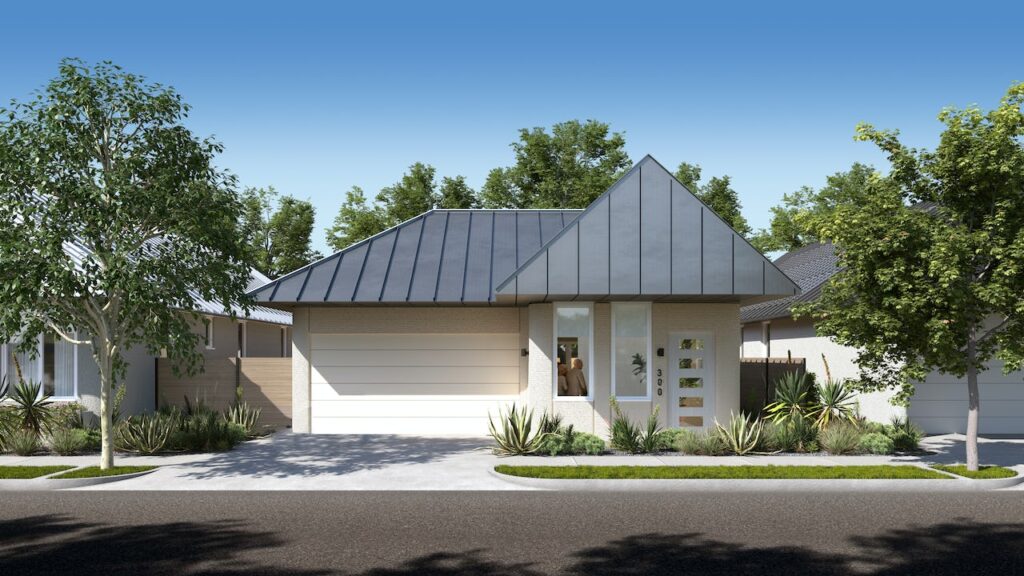



There are many reasons the construction industry has been slow to adopt technology. However, Wolf Ranch in Texas changed the tune.
Wolf Ranch in Georgetown, Texas is located about 30 miles north of Austin. Construction firm ICON and architecture firm Bjarke Ingels Group (BIG) is creating the world’s largest community of 3D-printed homes — and the neighborhood just unveiled its first completed house.

Wolf Ranch in Georgetown, Texas, is home to an innovative project featuring 100 3D-printed homes. Developed by Icon in collaboration with Hillwood Communities and Lennar, these homes are part of the Genesis Collection and are designed by the renowned architecture firm Bjarke Ingels Group.
The homes are constructed using Icon’s Vulcan printers and a proprietary cement-like material called Lavacrete. The construction process involves printing the walls in place, while human builders complete tasks like installing the roof, doors, and windows. The homes range in size from 1,574 to 2,112 square feet, offering three to four bedrooms and up to four bathrooms. They blend contemporary Texas ranch-style aesthetics with modern, energy-efficient designs, including solar panels and smart home technology like Ring Video Doorbells and WiFi-operated locks (New Atlas) (Wolf Ranch).
Prices for these homes start around $450,000, with pre-orders opening in 2023. The project aims to set a precedent for future large-scale robotic construction, emphasizing efficiency, sustainability, and innovative design (Technology for Humanity’s Future – ICON).
So, what blocks the construction industry from adopting new technology?
Yes, we can speak of unions, regulations, safety and lack of standardization, but what about legacy software, innovation and adoption?
Let’s examine software. A paramount challenge in the construction industry is the existence of old legacy software. Decades-old tools force many construction companies to be stuck in the on-premises realm and slowly transitioning to the cloud.
Innovation is tied to labor unions. Navigating the ecosystem of construction innovation usually revolves around dealings with unions and identifying their concerns to collaborate effectively. This is a balance between being progressive and understanding the concerns of workers to ensure innovation has positive impacts on both the industry and its workforce
Most construction projects are time-critical. Before adopting a new process or integrating new software, it may take 6-12 months to decide upon the appropriate software, then a few more months for training and to launch the MVP.
Finally, there’s the waiting game for the final decision and optimal transition period, adding further delays to the adoption process.
So how can the construction industry spark change fast? Find the right partners who share the same beliefs and GO. Check out more from a great article by ArchDaily. Business partnerships in the IT industry can be incredibly powerful, driving innovation, growth, and competitive advantage. The cross-pollination of ideas allows partnerships to bring together diverse perspectives and expertise, fostering an environment where innovative ideas can flourish.
At UnKommon, we are constantly connecting clients (and non-clients) to one another to watch digital innovation occur!